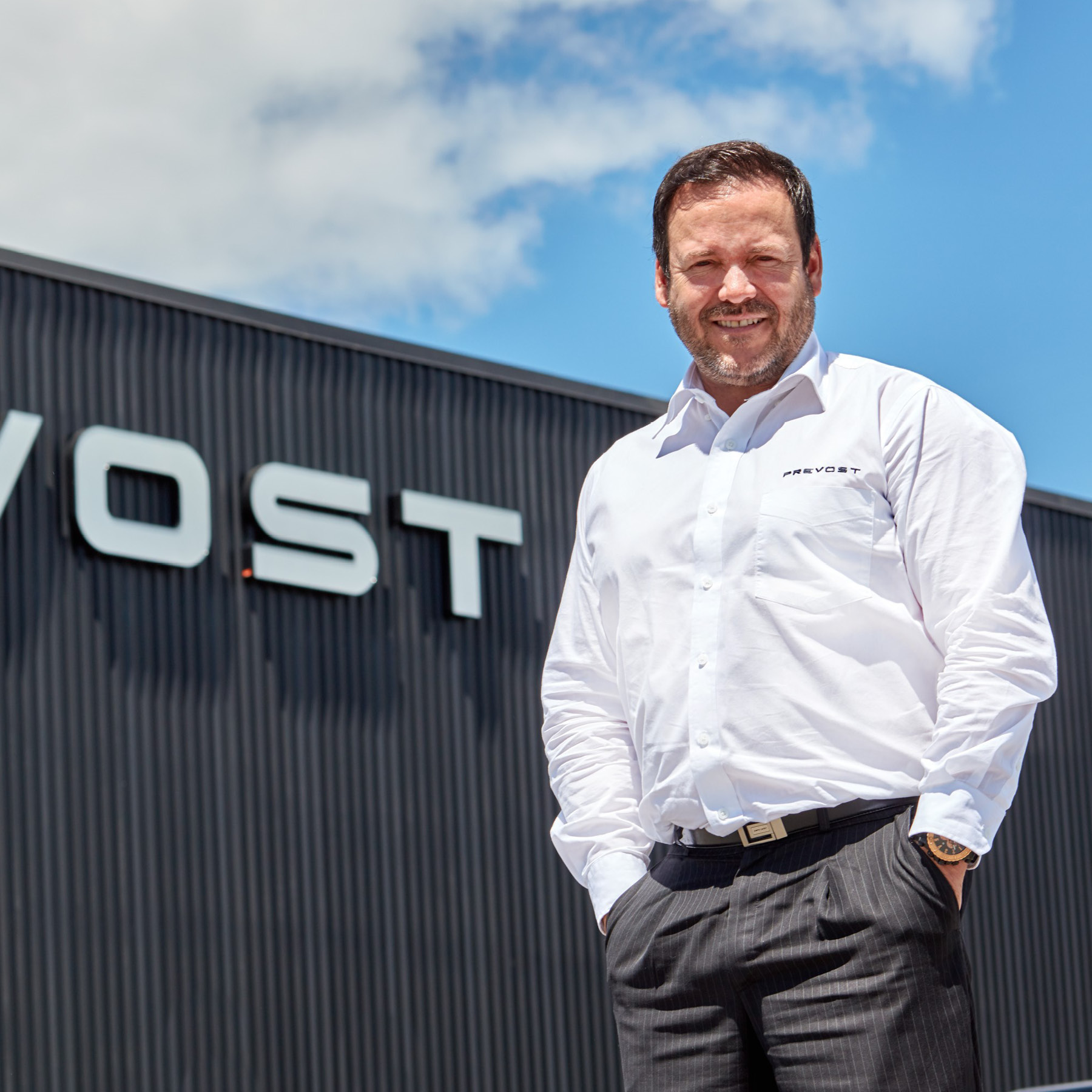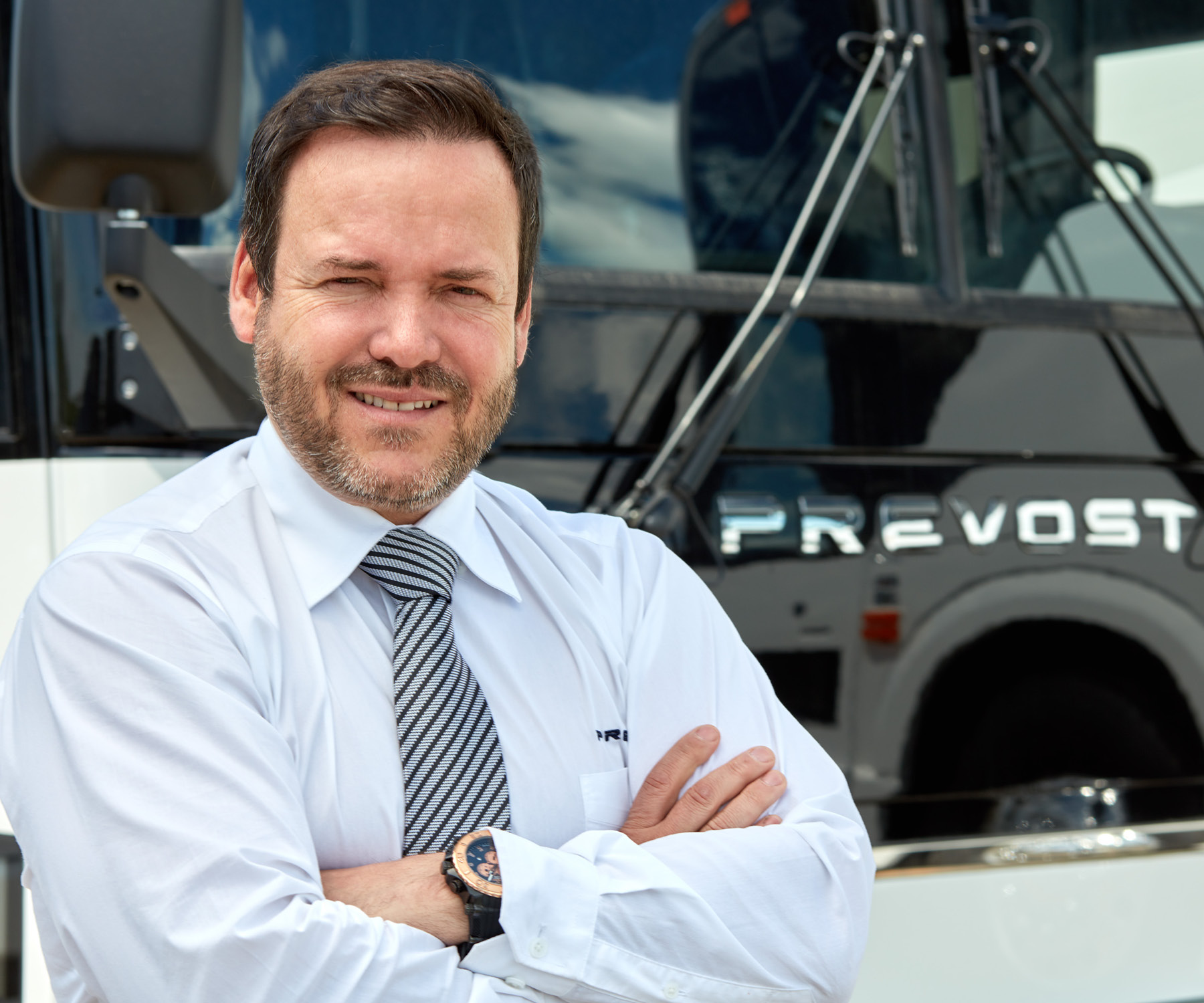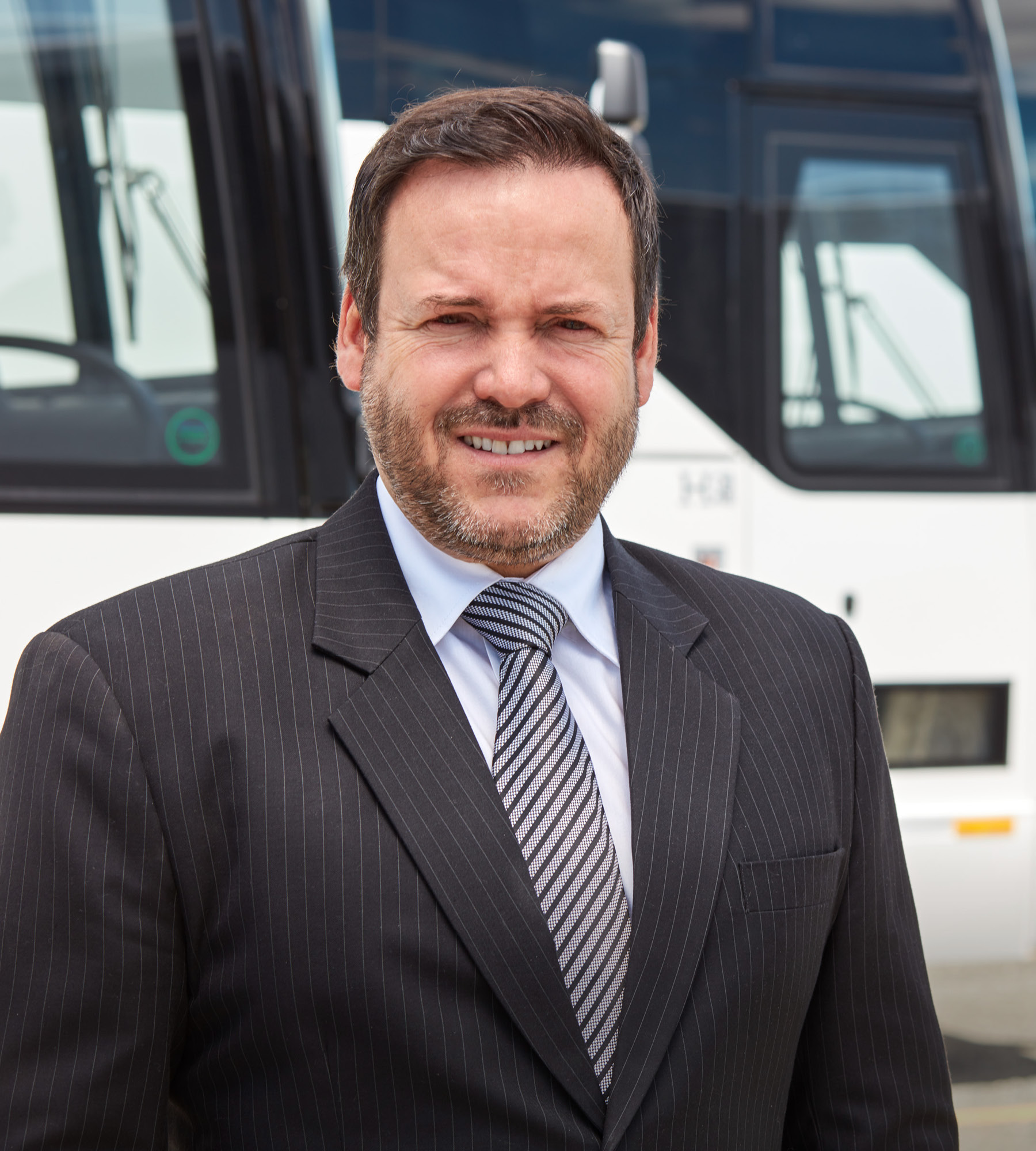Language
You can read the magazine in one of the following languages
Modern life moves quickly, and nowhere is this more evident than in the evolution of the automotive industry. In less than 100 years, cars, trucks, buses and even aircraft have become so commonplace the world over that we take them for granted.
In a unique position to appreciate this journey from the inside is François Tremblay, President of Prevost, Volvo Group Canada and Volvo Bus North America.
“Prevost started as a small, more localized business in the countryside of Quebec and we have grown now to be the market leader in North America when it comes to the motor coach business,” Tremblay says.
The progress is staggering: from fulfilling single orders for wooden-framed motor coaches in the 1920s and becoming part of the Volvo Group in the 1990s, to now being the coach of choice to A-list musicians and supplying more than 720 vehicles to New York City’s bus fleet.
But given the enthusiasm with which the company has embraced technology and fostered relationships over the decades, it’s not surprising.
Understandably, the recent COVID-19 pandemic had a dramatic impact on the business. “For the transportation industry, it was quite tough. We were basically in the same boat as the airline and the cruise ship industries,” he says.
“But we thought, ‘What can we do better coming out of this?’ And it came down to improving our processes and our relationships with our suppliers.”

“Prevost started as a small, more localized business in the countryside of Quebec and we have grown now to be the market leader in North America.”
And Prevost truly walked the walk. From helping suppliers during power shortages to seeking their input in the product development process, the result has been a more streamlined production – and deeper, more meaningful partnerships.
Tremblay took this to the next level by taking their coaches on the road and visiting suppliers to show both the employees and executives the value of the work they do for Prevost.
“We bring a little barbecue and we invite them to see the bus and show them where their part fits, and they can see the bigger picture,” Tremblay says. “A lot of them have never seen the finished product.
“It builds our relationship with the supplier but it also builds connection for our supplier’s employees and leads to less turnover.”

The investment of time and resources in building such relationships is worth it, according to Tremblay. “We don’t always choose the cheapest supplier, but we want to select the supplier that has the most potential to support us in our growth, in our vision and build,” he explains.
A significant driver of Prevost’s success is its commitment to sustainable practices. “Volvo Group is the leading sustainability manufacturer bar none, globally. We’re the biggest seller of electric trucks in the world,” Tremblay says.
“And the ultimate goal is to have 100 percent zero emission vehicles by 2040, which is almost round the corner.”

“The ultimate goal is to have 100 percent zero emission vehicles by 2040.”
The focus on the finished product is only part of Prevost’s approach, however. “It starts at the local level, the factory level,” he adds. “We’re also looking at how we can reduce energy consumption.”
This includes introducing LED lighting in factories to reduce power use, reusing batteries in charging stations rather than sending them to landfill and changing to a lower-emission welding gas. Even the cardboard boxes that parts come packaged in are reused – they’re sent to local farmers to be used as a chemical-free weed suppressant.
“Every year we give ourselves the target to reduce the waste in things we’re using to build our product, so we can become more efficient,” Tremblay says.
Striving for a sustainable future is only possible due to the strong position the company has built in the market, but Tremblay doesn’t take Prevost’s success for granted.
“Reaching our 100th anniversary is a huge milestone, given the turmoil in the industry.”

“Great product and great aftermarket support are our differentiating factors.”
Despite this, it’s the focus on the customer and their needs that remain the most important elements of the company, and Tremblay believes that this is what continues to bolster Prevost’s position in the market.
“It’s easy to innovate and put in a lot of gizmos and smoke and mirrors and say, ‘Hey, wow, here’s the latest and greatest’. But for us, we always take a step back and say, OK, will this technology or a new innovation bring a tangible benefit for the customer?” Tremblay says.
“We’re looking at different ways to make sure that we can enhance the brand perception by doing things differently. But great products and great aftermarket support are our differentiating factors. None of this could be achieved without the passion and dedication of our 2,000 experienced employees.”
